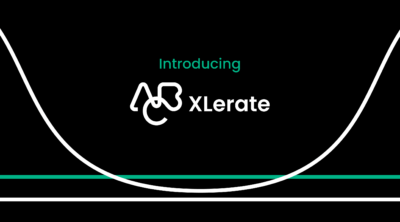Business failures are often attributed to a lack of financial foresight. Many owners and managers fail to factor in all their running expenses and don’t have emergency funds. As a result, they incur heavy losses and ultimately shut the shop.
Here are some stats for context:
- Data released by the Bureau of Labor Statistics suggests that only 30% of all small businesses stay afloat for over 10 years.
- A survey conducted by CB Insights concluded that 29% of the start-up founders closed their businesses because they ran out of money.
- Another study by the US Bank attributes cash flow problems as a reason for over 80% of start-up failures.
These facts suggest that better planning of finances and optimal resource allocation can save thousands of companies. But, unfortunately, most new businesses start with a great business plan but don’t back it up with a solid financial plan.
So, how do you save your business from a financial disaster?
The solution is simple — just find out how much it actually costs to run your business. It will give you an idea of whether you need funding or you can sustain yourself for many months.
In this article, we’ll see how to make an expenditure plan and the factors that decide your monthly costs. Skip ahead to:
How to make a monthly expenditure plan?
Here’s a quick Business 101 lesson for you. There are two kinds of expenditures you’ll be having as a business owner — capital expenses (CAPEX) and operating expenses (OPEX).
CAPEX is the purchase of goods and property that are meant to be one-time expenses. Heavy machinery, real estate, and the likes are a part of CAPEX.
OPEX are the costs you incur for conducting business operations. Rents, salaries, supplies, and similar costs form the OPEX. Evidently, OPEX is going to be a major part of your monthly expenses.
Now that we have classified our major start-up costs, let’s look at the steps to make an expenditure plan.
- List all the operating costs
- Negotiate to get better deals from suppliers
- Come up with revenue projections
- Account for seasonal changes in demand and supply
- Chart out a cash flow plan
- Assimilate all the information and prepare a monthly budget
These are tentative steps to find out the monthly costs of running your company. Depending on the nature of your business, you can tweak them and add more steps to it.
In addition to this, always have an emergency fund that gives you a leeway of 3-6 months. COVID-19 was a rude wake-up call for businesses that were surviving on a hand-to-mouth basis. Lay-offs and other cost-cutting measures should be the last resort.
11 major running expenses for small businesses
Here, we’ll look at where the main chunk of your budget will be allocated. For more great advice on better managing your finances, check out this episode of The Fitness Founders Podcast featuring Andrea Hovel, the co-owner of Healthier Booking. She explains the three main financial statements you need to know about and the business pitfalls you need to avoid.
1. Equipment
Unless you have the right machines and tools, you cannot expect smooth operations.
Most companies have recurring office equipment needs. For example, A restaurant might buy a new oven this month, dishware in the next one, and some stoves in the month after. Similarly, a supermarket needs new shopping carts and display racks every now and then.
Even service-based and remote-working companies need computers, printers, and other gadgets that make employees’ lives easy.
2. Payroll
The actual monthly cost of an employee is more than just the monthly wages. When you pay $1000 in wages, the cost to the company is typically between $1200-$1400. It’s because you’ll have to pay taxes and insurance premiums.
Remember, your payroll costs also include bonuses, commissions, employment taxes, and other monetary reimbursements.
Whether it’s going to a manufacturing site or meeting a client, there’s bound to be some amount of travel in every business. It often comes with allied expenses such as food, lodging, and transportation. Watch out for such costs incurred by the employees.
3. Inventory
If your company provides services or deals in digital products, you don’t have the hassle of maintaining an inventory. But if you deal in physical products, an inventory list is a must.
Inventory planning is important for scaling or cutting down on your production. If your product has a shorter shelf-life, you need to manufacture in small batches constantly.
Businesses tend to make plans according to the time of the year. For instance, a gift shop would naturally expect more demand during the holiday season. Similarly, a sunscreen manufacturer would expect to sell more during the summers.
That said, you need enough buffer stock to handle an unanticipated increase in demand.
4. Marketing
Be it an elaborate website or just some flyers for your shop — all these add up to your marketing costs.
If you have an in-house marketing team, the costs would be limited to the advertising material you use. But if you’re hiring an agency, you might have to shell out more from your pocket.
If you run seasonal marketing campaigns, you might incur higher costs in those months. Thanks to social media, many companies have a bare minimum marketing budget. It lets you target particular demography by spending a few dollars every month.
5. Space
Remote teams are in for luck because they don’t have to spend a dime on office space. On the other hand, businesses that require an office or a storefront have to pay rentals.
Traditional office spaces charge a fixed rate based on the area. But co-working spaces charge based on the number of employees, so it’s difficult to assign a fixed monthly cost. The startup expenses are not limited to the office space. There are recurring maintenance charges for janitorial services, electricity, and sanitation.
The Top 10 Barriers
Slowing Your Fitness
Business Growth
Discover more Many a time, companies need warehouses and off-campus spaces to manage their supply chain effectively. Leasing such spaces increases the overheads significantly.
6. Utilities
The cost of office supplies and utilities might seem insignificant, but they are not.
Stationery items are often used liberally in office environments. A study suggests you might end up spending anywhere between $45-92 per employee every month on supplies alone.
Besides, you want to make your employees comfortable with advanced tools, good furniture, and a well-stocked pantry. Such small bills add up and increase your operating budget significantly.
If you’re a digital-first company, you might incur comparatively lower costs. You’ll be using business email IDs, video conferencing software, and cloud storage plans for your team. This might add up to anywhere between $20-70 per employee.
7. Consultation
There are multiple moving parts in a business and it’s impossible to be a master of everything. Hence, you need consultants.
Industry consultants help you steer the course of your business. They can help you network, get better deals, and make the most of your resources. If you’re experienced and have a solid business strategy, you might not need their services.
There are other specialists who are essential for your business — lawyers, accountants, real estate consultants, and the likes. They provide services that are important for your business and help you overcome regulatory hurdles.
While you can do your own taxes or bookkeeping, such tasks might eat up your valuable time.
Consultants often work on retainers, but it’s definitely cheaper than hiring a full-time employee. Besides, you’ll be needing professional services only a few times a year.
8. Insurance
There are different kinds of insurance premiums that you need to pay as a small business owner.
Insurance protects you from sudden financial liabilities. Moreover, they help you overcome hurdles like lawsuits, natural disasters, and work disruptions.
Here are the most common types of business insurance.
- General liability insurance
- Commercial property insurance
- Workers compensation insurance
- Errors and omissions insurance
The number of insurances you need depends on various factors. Based on the size of your company and the nature of your work, you might also need workers’ compensation, a commercial umbrella, and professional liability insurance.
9. Depreciation
This is a factor that is often overlooked by small business owners.
Your company assets lose some of their value every year. It includes fittings, machinery, and inventory (everything except real estate and other investments). This erosion of value is known as depreciation.
Even intangible properties like proprietary software, patents, and copyrights depreciate every year. This means that if your business isn’t functional, you’re losing some money every month.
Let’s take the example of furniture — the industry-standard depreciation rate is 10% a year. So, a $1000 couch you bought for the office loses $8.3 of its value every month.
Depending on your asset type and their utility, every article you own could be losing anywhere between 1 to 4% every month.
10. Taxes
Your tax rates depend on whether you’re a registered corporation or a pass-through entity.
Corporations pay a fixed rate of 21% as set by the federal government. Pass-through entities attach their business income to their personal financial statements. So, they may end up paying anywhere between 10-37% as income tax.
You may be eligible for tax deductions based on your annual revenue and type of business.
11. Interest
SBA loans and business credit cards are preferred by start-ups to meet their short-term financial demands. While they are considered to be non-operating expenses, such payments surely increase your monthly costs.
You could be paying lenders anywhere between 5 to 10% in interest. Your credit card might not warrant interest payments, but there might be transaction fees and other additional costs.
In summary
It all comes down to fiscal discipline and meticulous planning. Don’t underestimate your business expenses and overestimate your revenues, especially if you’re just starting out.
Once you have a monthly expenditure plan ready, you’ll have a clear idea of how much money your business needs. This will let you focus on the core activities without any hassle.
Here’s a quick recap of what we covered in this article.
- Small businesses that don’t have a thorough monthly expenditure plan often end up in failure
- Making an expenditure plan involves analyzing the monthly costs, projecting revenues, and budgeting
- Factors like equipment, payroll, taxes, depreciation, and insurance are unavoidable for any business
- Depending on the business, the monthly costs may include bills such as space, inventory, marketing, and consultation
- A monthly expenditure plan should always be complemented with an emergency fund to avoid drastic measures















